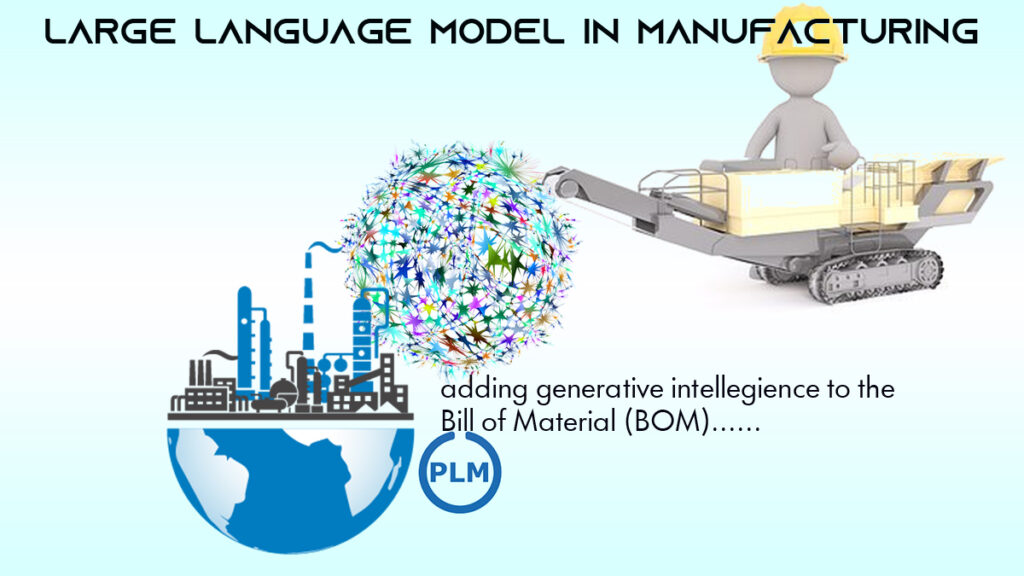
LLM in Manufacturing! Couple of days before myself and my friend (Dinesh Tantri) were discussing about the recent breakthrough in artificial intelligence (AI) is the introduction of large language processing technologies.
AI is undertaking a paradigm change with the surge of designs educated on broad data that can be adjusted to a wide variety of downstream jobs. Example of LLM application trending is ChatGPT, it makes use of OpenAI‘s large language model GPT-3 (Generative Pre-trained Transformer 3) to accomplish jobs in a few seconds.
So what is Large Language Models?
It is a large language model that can apply its knowledge to predict and generate content. Innovations in the field of neural networks have resulted in much more intricate systems that are the key to realizing the complete possibility of AI. In simpler terms, the LLM trained under human guidance and categorize each activity. It enabled the version to find out like people do by making mistakes and also with favorable support. To make it easier to understand, LLM learn from human language one step ahead of the cobot.
There is a interesting article from Forbes, that highlights three emerging areas that will help define the next wave of innovation in generative AI and LLMs.
Use of LLM can change lots of elements of modern day in many domains. It made us to discuss how LLM can be used practically in various domain. That triggered me to thinking of using LLM in Product Lifecycle Management (PLM), i.e. adding generative intelligence to the Bill of Material (BOM), which is the blood of the manufacturers. Use of LLM can enable PLM Users to build more intelligent systems with a richer understanding of their business process than ever before as well PLM vendors can able to build a more advanced intelligent BOM management system.
One of the immediate function, where LLM can applicable, that came to my mind is BOM Comparison, based on variants. Other use case might be in terms of validation and integration of data flow across enterprise application starting from CAD to PLM through ERP, MES, IIoT etc. When it comes to Industrial Internet of Things (IIoT) could be used for the preventive maintenance, such as assisting determine the condition of machine tools and also forecasting when maintenance ought to be performed with the recommended procedures.
“LLM will certainly continue to be the requirement for cloud based SaaS technology.”
Checkout how Microsoft Dynamics 365 Copilot takes advantage of recent advancements in generative AI to automate these tedious tasks and unlock the full creativity of the workforce. Dynamics 365 Copilot puts CRM and ERP to work for business users to accelerate their pace of innovation and improve business outcomes in every line of business. Ref: Microsoft
Oleg Shilovitsky, founder of OpenBOM says
Generative AI design would allow options for engineering and R&D teams to consider in terms of structure, materials, and optimal manufacturing/production tooling. For example, it would potentially suggest a part design that optimizes against factors like cost, load bearing, and weight. Generative design can also enable reimagining of product look and feel, often resulting in unique aesthetics and form that is not only more compelling to end users, but more practical and environmentally sustainable. Ref: BeyondPLM
Jos voskuil of TactIT says
By asking ChatGPT for their opinion, we learn the following:
Product Lifecycle Management (PLM) education refers to training and development programs that focus on teaching individuals how to effectively manage the lifecycle of a product within an organization. This can include a wide range of topics, such as product design, development, and engineering; supply chain management; quality control and assurance; and product retirement and disposal. Ref: VirtualDutchman
Currently experiencing Industry 4.0 and Industry 5.0 whereas internet of thoughts makes sure to bring ourselves on the internet where it would certainly have the ability to take Industry 6.0 revolution right into our real life. Just my thoughts!

